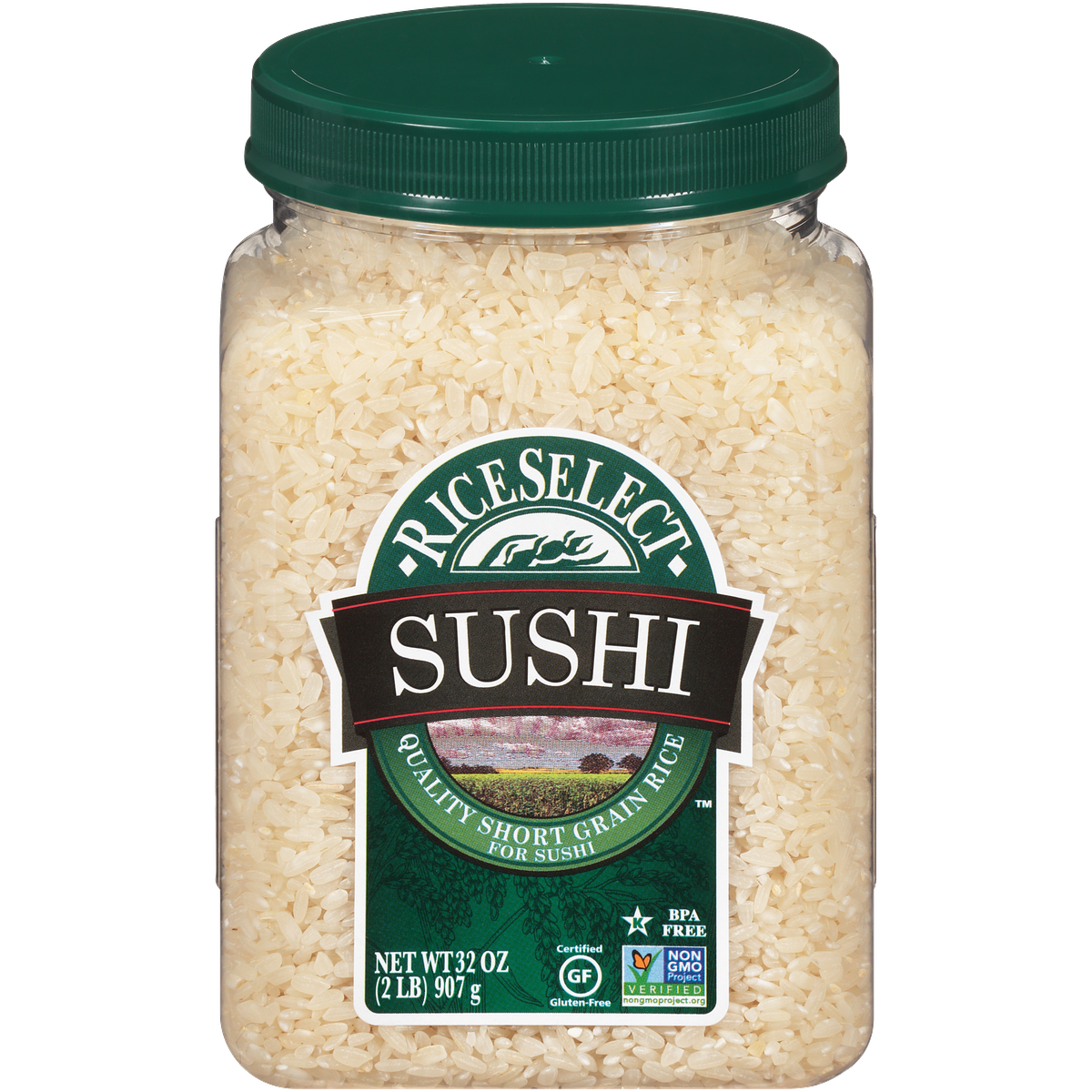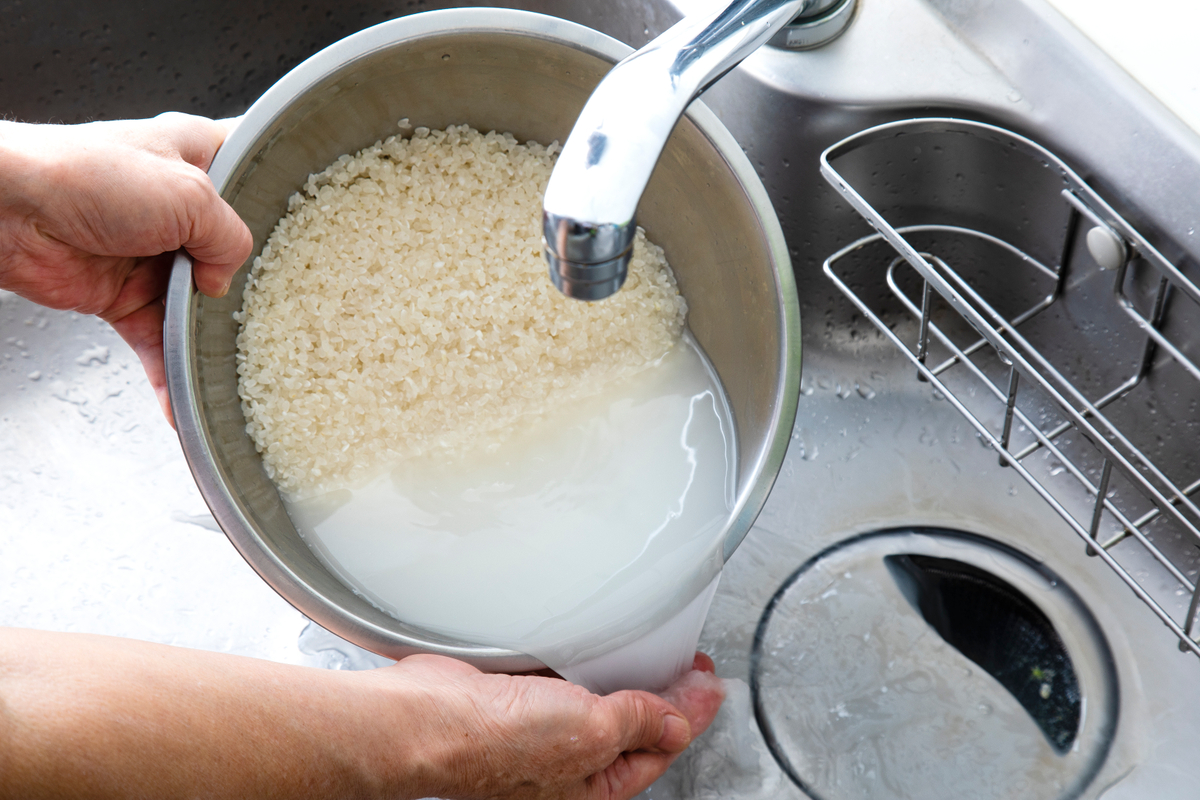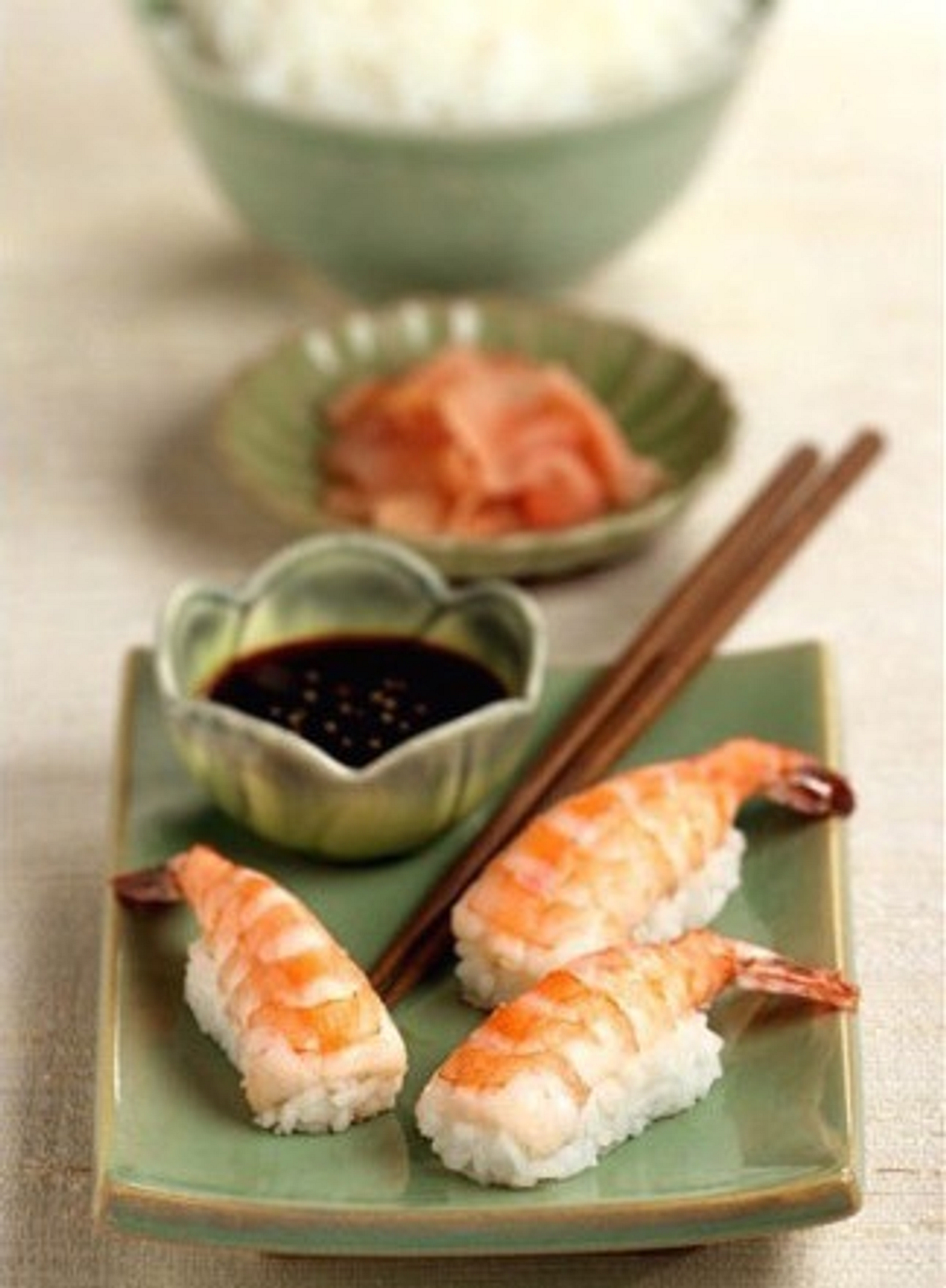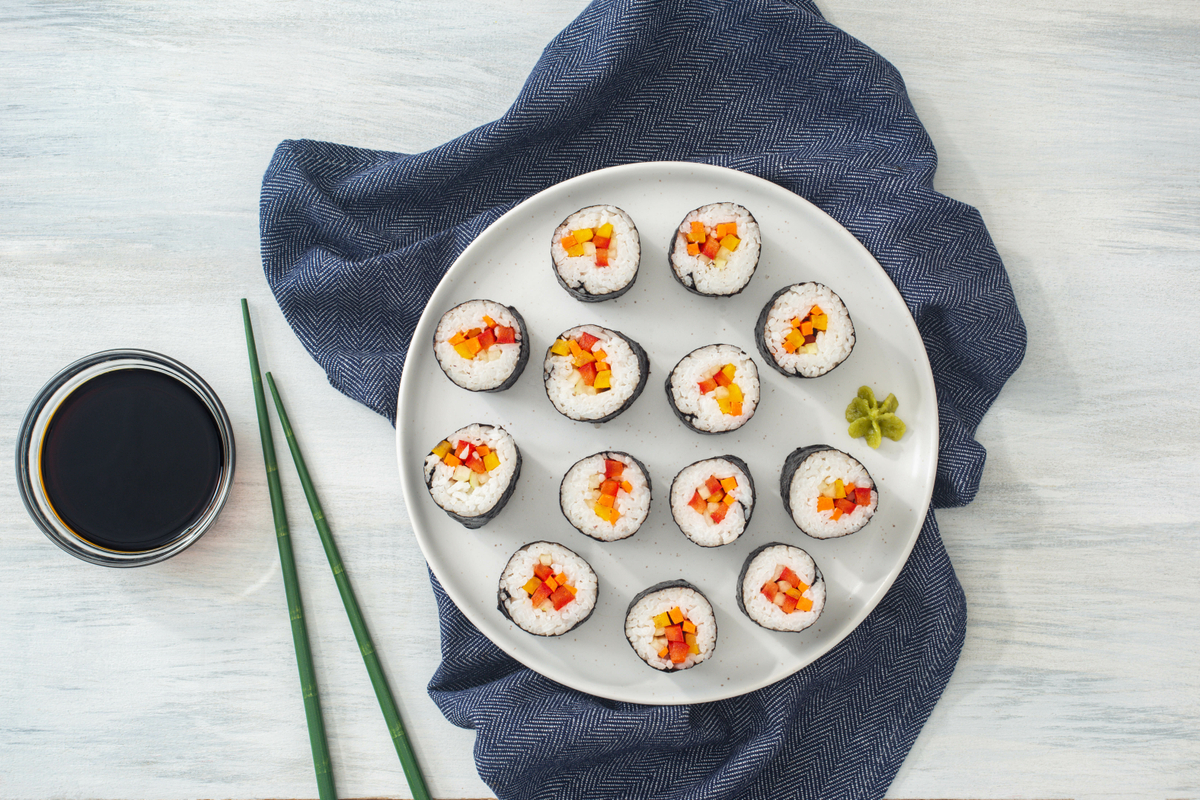Tastefully addictive, flavorful, and artistically beautiful — making sushi is a culinary craft to be mastered. More than simply rolling ingredients together, Itamae, or sushi chefs, require a true mastery of understanding the complex blend of complementing color, texture, taste, and presentation all in one bite. In fact, many say that sushi rolls are served pre-sliced to showcase the inner artistic work.
Nonetheless, while I may not be able to study under the finest chefs at home, I can always continue my culinary adventures using the best quality ingredients to make my very own makizushi (sushi rolls), with sumeshi (sushi rice) filled with seafood and vegetables. To show our respect for generations of effort, come with me to uncover everything you’ll need to know in order to understand sushi rice and become a connoisseur. After all, it is the foundation for an unforgettable sushi experience.
Sushi Nigiri Rolls
5 Facts Every Sushi Rice Connoisseur Should Know
While originally a common street food in Japan, sushi, in all its varieties, has risen the ranks of gastronomic delicacies. Follow along with me to learn essential information with a few etiquette tips and recipes to try along the way.
# 1 Use Short Grain Rice
To reach authentic Japanese standards, you’ll need to use short-grain rice granules, as they have a higher starch content. When cooked, the starch is released, giving it a more luscious and sticky texture. While medium-grain rice makes for a great arborio rice recipe, using it, or long-grain rice, simply won’t have the same compact effect when rolling your ingredients.
When I prepare sushi, I consistently use RiceSelect® Sushi Rice as it always gives me that signature texture I’m looking for to reach near perfection. I highly suggest this variety for both beginners and experts alike.
# 2 Rinse Rice Before Use
Sushi rice should be rinsed before preparing. Due to the aforementioned starch content in short-grain rice, if left unrinsed, would result in too much, leaving a mushier texture. However, that is where the challenge arises to achieve those perfectly sticky, yet separate rice granules to roll into a makizushi or nigiri base.
Before beginning, this One Pot Japanese Rice requires rinsing, contrarily it would lead to a mushy result.
Technique Tip: In order to preserve that beautifully compact yet individual grain look, experts suggest that when seasoning the cooked rice, one should handle the rice gently. To do this, my favorite method is to slice into the rice with a wooden paddle, or spoon, and fold together with care in order to avoid any broken granules.
# 3 Enjoy Sushi Without Chopsticks
Put down the chopsticks, sushi rolls are meant to be eaten with your fingers. There are some varieties, however, like nigiri or Shrimp Finger Sushi, which can be eaten with chopsticks as the fish should be dipped in the soy sauce upside down, rather than the rice for optimal enjoyment. In that case, the chopsticks help to hold everything together while lightly dipping to flavor the fish.
Etiquette Tip: Contrary to popular belief, wasabi should not be mixed in with the soy sauce. In fact, true sushi chefs traditionally add on the correct amount of wasabi for you to bring out the exact flavors, spice, texture and aroma needed to savor each bite.
# 4 Season Your Rice
Sushi rice is bolstered with the signature flavors of rice vinegar, sugar and salt. This practice dates back to the very origins of sushi itself. In Japan, fish was preserved by wrapping it in fermented rice. Eventually, vinegar was added to prolong its freshness, and the rice would then be thrown away and the fish eaten. When the Japanese discovered the incredible flavor combination, they began eating the fish wrapped in vinegared rice.
To season my sushi, I always have rice vinegar and sugar on hand or mirin, which is a sweet rice wine vinegar to use in its place. Once flavored, I use it as a backdrop for home-rolled Vegetarian Sushi Rolls or I fill it with sushi-grade fish.
Flavor Tip: Nowadays, kombu kelp seaweed is also added to the cooking water for sushi rice for an added umami touch.
# 5 Expand Your Sushi Rice Repertoire
While the sticky texture of short-grain rice is ideal for sushi, it also lends itself to a variety of other dishes perfectly. I love experimenting in the kitchen to always surprise my guests with traditional ingredients moonlighting in a new context.
Start by exploring new ways to add umami flavor to the rice. Make your meal an entire multi-sensory experience with Italian Sushi — all the same look and feel of sushi with Italian flavors wrapped in prosciutto! Or, add whipped egg whites into the rice for a Sushi Burger with a golden crispy bun.
Italian Sushi with Prosciutto
My favorite way to use sushi rice is to do the completely unexpected and make it into a delectable rich and creamy dessert! This Toasted Pecan Rice Cream speaks for itself simmered with sugar, vanilla, eggs, milk and cream and combined with toasted pecans for a crunch in each bite. Or, layer everything together to create a show-stopping version of a classic with this chocolatey decadent Almond Joy Torte.
My challenge for you is to use this guide as a starting block to create your own culinary masterpiece using quality ingredients, like RiceSelect® Sushi Rice. Supposedly destined for one thing, you have the power to transform it into something deliciously your own. Try any of these recipes using another rice grain, quinoa or branch out and try an orzo salad, a shrimp salad recipe or a pearl couscous recipe! Whatever you choose, make sure to share your spontaneous brilliance with me on social media by tagging @riceselect








